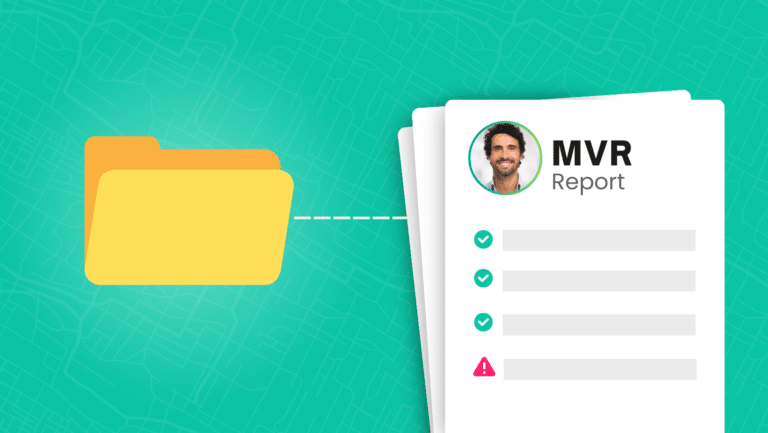Addressing Truck Driver Fatigue & Mental Health

Ever try staying awake after just a few hours of sleep? Now imagine doing that while hauling 80,000 pounds down the highway. According to the NHTSA, driver fatigue plays a role in 13% of all large truck crashes.
Fatigue and mental health aren’t just personal issues—they’re safety issues too. And ignoring them can lead to dangerous consequences on the road.
Let’s dive into why this matters, what signs to watch for, and how managers can take real action to support their drivers.
What Is Truck Driver Fatigue?
Fatigue isn’t just feeling tired. It’s a state of physical and mental exhaustion that reduces a driver’s ability to operate safely and can be caused by:
- Sleep deprivation
- Social isolation
- Poor diet and exercise
- Financial and job-related stress
- Personal issues
- Lack of access to mental health resources
Real Talk 💬 It’s easy to think “just a few more miles” won’t hurt. But fatigue dulls your focus and delays your reaction time—making it one of the most dangerous conditions a driver can face. It deserves the same attention as distracted or impaired driving.

70% of truck drivers report feeling drowsy while driving at least once a week.
Recognizing the signs of fatigue is critical for both the driver and fleet managers. Here are some common indicators:
- Drowsiness or Frequent Yawning: A clear sign that the body is not getting the rest it needs.
- Difficulty Focusing: Trouble keeping attention on the road or frequently zoning out.
- Irritability or Mood Swings: Mental fatigue often leads to emotional stress, causing drivers to feel short-tempered or overly anxious.
- Slow Reaction Times: A delay in responding to road conditions, which can be a result of both physical and mental tiredness.
- Heavy Eyelids: A desire to close the eyes or difficulty keeping them open while driving.
Understanding Hours of Service (HOS)
The Federal Motor Carrier Safety Administration (FMCSA) enforces HOS regulations to prevent driver fatigue by limiting the hours commercial motor vehicle (CMV) operators can drive and work.
- 14-Hour Limit: Drivers may not operate a CMV after 14 consecutive hours on duty, following 10 consecutive hours off duty.
- 11-Hour Driving Limit: Within the 14-hour window, drivers are permitted to drive up to 11 hours.
- 30-Minute Break: After 8 cumulative hours of driving, drivers must take a 30-minute break.
- 60/70-Hour Limit: Drivers may not exceed 60 hours on duty over 7 consecutive days or 70 hours over 8 consecutive days.
What Fleet Managers Can Do to Tackle Driver Fatigue
Talk About It Openly
Create a culture where drivers feel comfortable discussing fatigue. Encourage regular check-ins and normalize conversations about rest and sleep quality.
Ensure HOS Compliance
Use ELDs (Electronic Logging Devices) and automated alerts to help track HOS compliance in real time. Integrate systems that flag violations early, so you can address them before they become risky patterns.
Promote Work-Life Balance
Avoid overloading drivers with back-to-back schedules. Give them enough time to rest and recharge. Balanced schedules lead to safer, more alert drivers.
Provide Driver Training
Educate drivers on the risks of fatigue, warning signs to look out for, and best practices for healthy sleep habits. Include fatigue management in your safety meetings or programs. Did you know that only 16% of fleets have formal fatigue management programs?
Use Data to Identify Risks
Combine HOS logs with MVR Monitoring to identify patterns of risky behavior, like frequent violations or reckless driving, that may indicate fatigue or burnout.
Read more: Can MVR Monitoring help detect distracted driving trends?
Fatigue doesn’t clock out, and neither should your commitment to safety.
By recognizing the signs of fatigue, enforcing HOS regulations, and creating an open, supportive environment, fleet managers can help protect not just their drivers but everyone on the road.
The message is simple: well-rested drivers make safer decisions. And when your drivers feel heard, supported, and properly trained, you’re not just meeting compliance—you’re building a stronger, safer fleet.
*We are not lawyers. Consult with your legal counsel to ensure your processes and procedures meet/ or exceed safety standards and compliance regulations. Please read our legal disclaimer.






